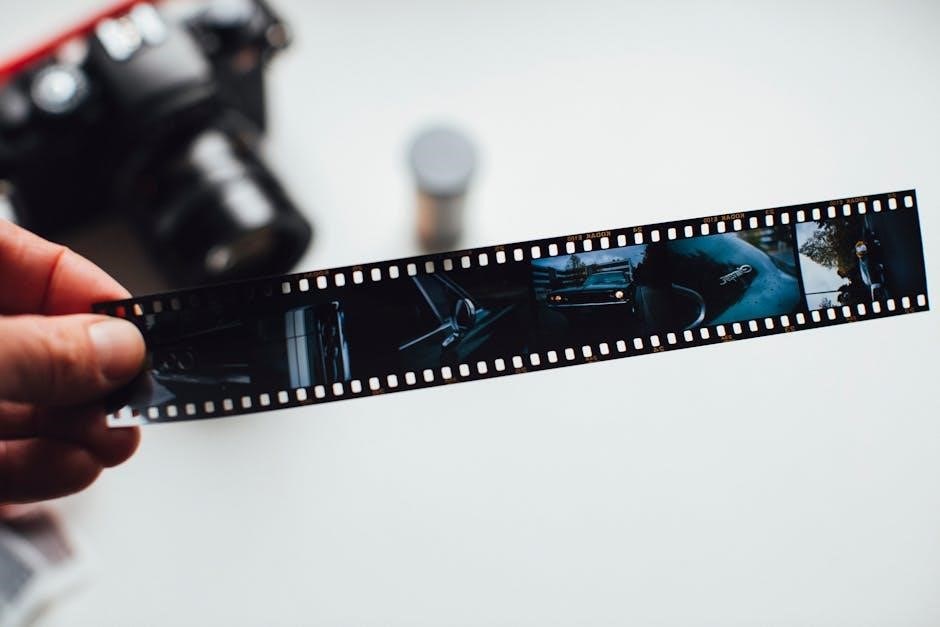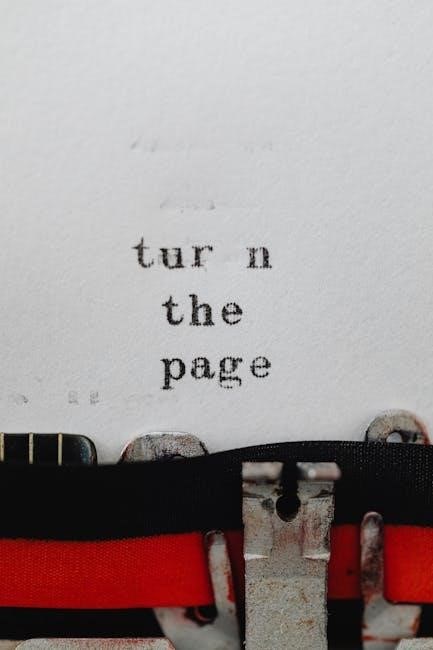The manual lensometer is a device used to measure lens power, with
portability
and ease of use, it is an essential tool for optometrists, using a standard optical lens and light source effectively always.
Definition and Purpose
A manual lensometer can be defined as an instrument used by an optometrist to find the back-vertex or the front vertex power of eyeglasses. The purpose of a manual lensometer is to provide accurate measurements of lens power, which is essential for correcting vision problems. This device is used to measure the refractive power of lenses, allowing optometrists to determine the correct prescription for their patients. The manual lensometer is an important tool in the field of optometry, as it enables optometrists to provide precise and effective vision correction. With its ability to measure lens power, the manual lensometer plays a crucial role in helping optometrists to improve their patients’ vision and quality of life. The device is designed to be user-friendly, making it easy for optometrists to operate and obtain accurate measurements. Overall, the manual lensometer is a valuable instrument in the field of optometry.
Portability and Ease of Use
The manual lensometer is a portable device, allowing optometrists to carry it anywhere, making it a convenient tool for use in various settings. Its ease of use is also a significant advantage, as it enables optometrists to quickly and accurately measure lens power. The device is designed to be compact and lightweight, making it easy to transport and store. Additionally, the manual lensometer is relatively simple to operate, requiring minimal training and expertise. This makes it an ideal tool for optometrists who need to measure lens power in a variety of situations, from clinical settings to remote locations. The portability and ease of use of the manual lensometer make it a valuable asset for optometrists, allowing them to provide accurate and efficient vision correction services to their patients. The device’s user-friendly design and compact size also contribute to its overall convenience and practicality.

Operating Instructions
Setup and adjustment are crucial steps for accurate measurements using a manual lensometer always effectively.
Setup and Adjustment
To begin using a manual lensometer, it is essential to set it up correctly on a stable surface, ensuring the device is level and secure.
The height of the chair and the angle of the lensometer should be adjusted to allow for comfortable viewing through the eyepiece.
The lensometer should be positioned in a way that allows for easy access and manipulation of the controls.
Proper setup and adjustment are crucial for obtaining accurate measurements, and any mistakes in this step can lead to incorrect results.
By following the manufacturer’s instructions and taking the time to set up the lensometer correctly, users can ensure reliable and precise measurements.
The setup and adjustment process may vary slightly depending on the specific model of the lensometer, so it is essential to consult the user manual for specific guidance.
Overall, careful setup and adjustment are critical components of using a manual lensometer effectively;
Focusing the Eyepiece
Focusing the eyepiece is a critical step in using a manual lensometer, requiring careful attention to detail to ensure accurate measurements.
The eyepiece should be turned slowly counterclockwise until the black cross becomes completely clear, indicating that the eyepiece is properly focused.
This process may need to be repeated several times to achieve optimal focus, and the user should be patient and meticulous in their approach.
Proper focusing of the eyepiece is essential for obtaining clear and accurate readings, and any errors in this step can lead to incorrect results.
The user should consult the user manual for specific guidance on focusing the eyepiece, as the process may vary slightly depending on the model of the lensometer.
By carefully focusing the eyepiece, users can ensure reliable and precise measurements, and the lensometer can be used to its full potential.
The focusing process is a key component of using a manual lensometer effectively and efficiently.

History and Development
The manual lensometer originated in the late 1800s with introduction of lensmeter technology and innovations.
The introduction of the lensmeter, also known as a lensometer or focimeter, marked a significant milestone in the field of optometry. This device was first introduced in the late 1800s and revolutionized the way lens powers were measured. The lensmeter is essentially a centered telescopic optical system aligned with a standard optical lens and a rotatable target illuminated by a light source. The introduction of this device changed the way optometrists worked, making it easier to measure lens powers and prescribe corrective lenses. With the lensmeter, optometrists could accurately measure the power of lenses, which improved the overall quality of eye care. The device was widely adopted and became an essential tool in optometry practices. Over time, the design and functionality of the lensmeter have evolved, but its core principle remains the same. The introduction of the lensmeter paved the way for further innovations in optometry.

Clinical Lensometry
Clinical lensometry measures lens power using a device, with optometrists utilizing it to examine patients’ lenses effectively always with
lens
and light source technology combined together perfectly.
Measuring Lens Power
Measuring lens power is a crucial aspect of clinical lensometry, where optometrists use a manual lensometer to determine the power of a lens. This process involves placing the lens on the lensometer and adjusting the device to obtain an accurate reading. The lensometer is designed to measure the back-vertex or front vertex power of the lens, providing valuable information for optometrists to prescribe corrective lenses. The measurement of lens power is typically done using a standard optical lens and a light source, which helps to illuminate the lens and provide a clear reading. By using a manual lensometer, optometrists can accurately measure lens power and provide patients with the correct prescription. The device is portable and easy to use, making it an essential tool for optometrists. With its ability to measure lens power accurately, the manual lensometer plays a vital role in clinical lensometry.
Prism Measurement
The manual lensometer is also used to measure prism, which is an essential aspect of clinical lensometry. The device has a set of rings inside that are measured at 1 prism diopter, allowing optometrists to determine the amount of prism in a lens. The number of rings from the center of the reticule is used to calculate the amount of prism, providing an accurate measurement. This measurement is critical in determining the correct prescription for patients who require prism correction; The manual lensometer’s ability to measure prism makes it a versatile tool for optometrists, allowing them to provide accurate prescriptions and improve patient outcomes. By using the manual lensometer to measure prism, optometrists can ensure that patients receive the correct amount of prism correction, which is essential for correcting vision problems. The device’s prism measurement capability is an important feature that makes it an indispensable tool in clinical lensometry.

Using a Lensometer
Optometrists use a lensometer to measure lens power and prism, using
standard procedures
effectively always with ease.
Step-by-Step Process
To use a manual lensometer, a step-by-step process is followed, starting with placing the lens on the instrument, then adjusting the height and angle for easy viewing through the eyepiece. The eyepiece is slowly turned counterclockwise until the black cross becomes clear, focusing the eyepiece on the display area. Next, the lens is aligned with the reticle, and the dials are adjusted to measure the lens power and prism. The process requires attention to detail and practice to obtain accurate measurements. The lensometer is a precise instrument, and its proper use is essential for accurate lens measurement. By following the step-by-step process, optometrists can ensure accurate measurements and provide the best possible vision correction for their patients. The process is straightforward, but it does require some skill and practice to master, using a manual lensometer effectively always.
The importance of this device cannot be overstated, as it plays a crucial role in ensuring that patients receive the correct vision correction.
With its ability to measure lens power and prism, the manual lensometer is an essential tool for optometrists.
The information provided has shown the significance of the manual lensometer, and its impact on the field of optometry will continue to be felt.
Optometrists rely on the manual lensometer to provide accurate measurements, and its use is widespread.
The manual lensometer has become an indispensable instrument, and its importance will only continue to grow.
As technology advances, the manual lensometer will remain a vital tool, and its use will continue to be an essential part of optometric practice, using a manual lensometer effectively always.
